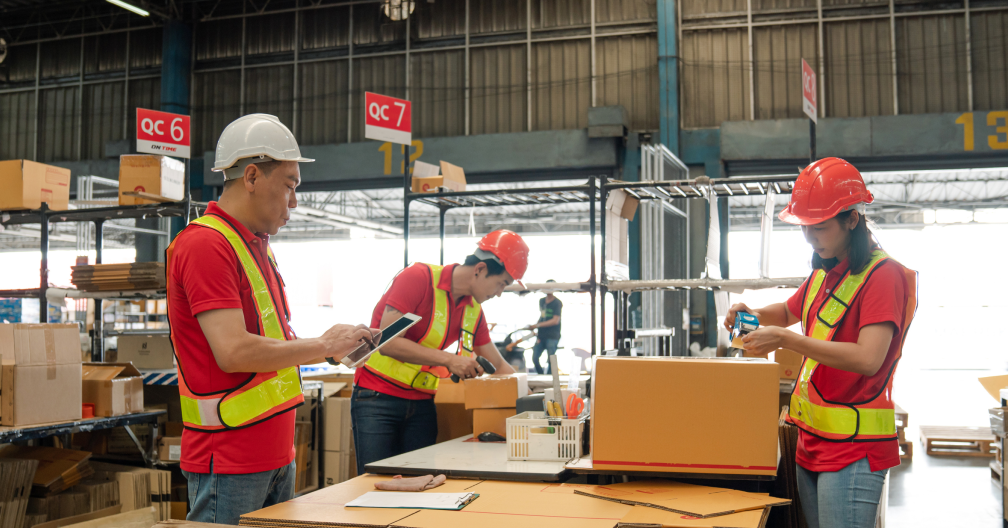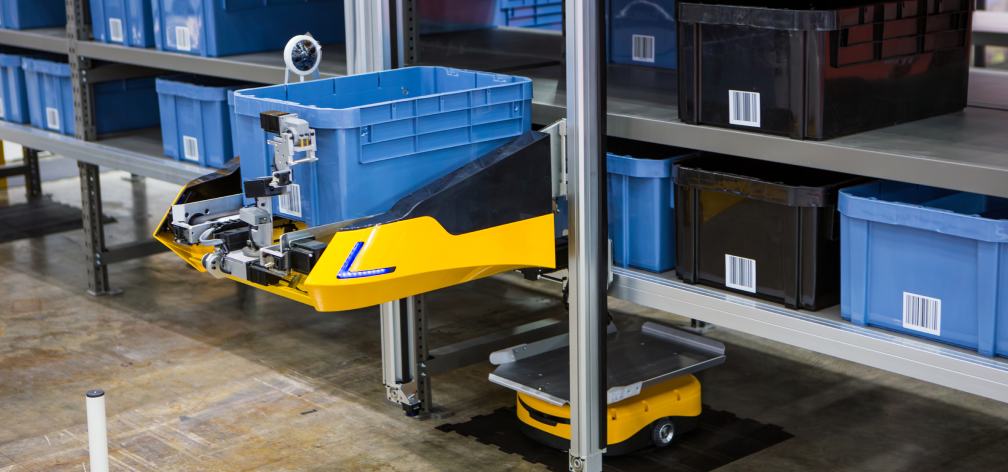How Warehouse Automation is Revolutionizing Logistics
Blogs
Picture this: Your warehouse team is simultaneously managing 500 SKUs across multiple clients, processing returns from Black Friday sales, and coordinating urgent shipments for a fashion client’s flash sale. Your system is flooded with orders from different channels, each with unique fulfillment rules. Just another day in the life of a 3PL–but it doesn’t have to be.
Imagine operations where advanced automated warehouse management systems tackle your most pressing challenges: managing complex multi-client operations, maintaining inventory accuracy across multiple channels, and meeting ever-tightening delivery deadlines. The result? Faster fulfillment, near-perfect accuracy, and the ability to scale operations without proportionally increasing costs.
In this blog, we will explore how warehouse automation is transforming the logistics landscape, from advanced management systems that handle common warehouse challenges to the cutting-edge technologies that are making warehouses smarter and more efficient than ever before.
What Is Warehouse Automation?
Warehouse automation refers to the implementation of technology and software systems that minimize human intervention in warehouse operations. It encompasses everything from basic automated storage systems in warehouses to sophisticated robotics and artificial intelligence-driven solutions. This technology integration helps streamline various warehouse processes, including inventory management, order picking, packing, and shipping.
The concept also goes beyond just replacing manual labor with machines. Modern warehouse automation is about creating an intelligent ecosystem where different components work together seamlessly to optimize operations. This includes automated warehouse racking systems, conveyor belts, robotic picking systems, and advanced warehouse management software that orchestrates these various elements.
How Warehouse Automation Helps in Logistics
The impact of warehouse automation on logistics operations is profound and multi-faceted. Here’s how it is transforming key areas of warehouse operations.
Inventory Management
Automated systems provide real-time inventory tracking and management, significantly reducing errors in stock counting and location tracking. This enhanced visibility helps maintain optimal inventory levels and prevents stockouts or overstock situations.
Order Fulfillment
With automated picking and packing systems, orders can be processed faster and more accurately. This improved efficiency leads to quicker delivery times and higher customer satisfaction rates.
Space Utilization
Automated warehouse racking systems enable better use of vertical space and optimize storage density. This improved space utilization can significantly reduce warehouse footprint and associated costs.
Data Analytics
Modern automated warehouse management systems provide valuable insights through data analytics, helping businesses make informed decisions about inventory levels, staffing, and resource allocation.
Different Types of Warehouse Automation

Warehouse automation comes in various forms, each serving specific needs and functions.
Fixed Automation
This includes permanent structures like conveyor systems and automated storage and retrieval systems (AS/RS). These systems are ideal for warehouses with consistent, high-volume operations.
Programmable Automation
These systems can be reprogrammed for different tasks, including robotic picking arms and automated guided vehicles (AGVs). They offer flexibility in handling various products and operations.
Flexible Automation
This represents the most advanced form of automation, combining artificial intelligence and machine learning to adapt to changing conditions in real-time. These systems can make autonomous decisions based on current warehouse conditions.
Advantages of Warehouse Automation
The benefits of implementing warehouse automation are substantial and can bring about improvements in operations and ultimately greater revenue:
Increased Efficiency
Automated systems can operate 24/7 without fatigue, significantly increasing throughput and productivity. This continuous operation capability is particularly valuable during peak seasons.
Reduced Errors
Human error in picking, packing, and inventory management is virtually eliminated with automation, leading to higher accuracy rates and fewer returns. This level of precision not only enhances operational performance but also strengthens reputation for reliability.
Cost Savings
While the initial investment in automation can be significant, the long-term cost savings in labor, error reduction, and improved efficiency often provide a strong return on investment.
Enhanced Safety
Automation reduces the need for human workers to perform dangerous or physically demanding tasks, leading to fewer workplace accidents and injuries.This not only protects employees but also reduces costs related to worker compensation, insurance, and downtime caused by accidents.
Scalability
Automated systems can easily handle seasonal peaks, client growth, or market trends, making it easier for 3PLs to scale operations up or down as needed. This scalability is particularly valuable for 3PLs, as it allows them to accommodate new clients or expand existing partnerships without significant operational overhead.
Industries Benefiting from Warehouse Automation

While warehouse automation benefits various sectors, certain industries stand to see significant improvements:
E-commerce
With consumers expecting next-day—or even same-day—delivery, automated systems prevent bottlenecks by dynamically adjusting workflows. Even with returns are streamlined through automated sorting and restocking processes. By slashing processing times and reducing errors, automation helps retailers stay competitive in a cutthroat market where delivery speed is king.
Manufacturing
For manufacturers, warehouse automation is the backbone of lean operations and just-in-time production. Automation also enhances resilience—by tracking components across global supply chains, manufacturers can swiftly adapt to disruptions, from material shortages to geopolitical delays.
Pharmaceutical
In an industry where mistakes can be life-threatening, pharmaceutical warehouses demand flawless execution. Automation ensures strict adherence to regulatory standards like FDA and GDP guidelines, with robotic systems handling sensitive vaccines, biologics, and medications in temperature-controlled environments.Additionally, automated labeling and inspection systems minimize human contact, reducing contamination risks while maintaining audit-ready documentation.
Food and Beverage
The food and beverage industry faces a unique challenge: delivering perishable goods quickly while minimizing waste. Automated “first-expired, first-out” systems rotate stock dynamically, reducing spoilage. These systems can also forecast demand spikes, thus, optimizing inventory.
Conclusion
Warehouse automation is revolutionizing the logistics industry by providing more efficient, accurate, and scalable solutions for modern warehouse challenges. For 3PLs looking to remain competitive in today’s market, implementing automated warehouse management systems is no longer optional but essential for future success. While the initial investment may be substantial, the long-term benefits in terms of efficiency, accuracy, and cost savings make it a worthwhile investment for forward-thinking businesses.
Ready to automate your warehouse operations and supercharge growth?
Get in touch with our experts today to discover Anchanto Warehouse Management
